LIFE ON THE HOOK: Sausalito’s Floating ‘Homeless’—from Pulitzer Prize-winning political cartoonist Mark Fiore—first appeared June 30 on KQED’s The California Report. Just one of several recent pieces on homelessness (see all tagged stories here), this post is unique in that Mark Fiore gives both a face and a voice to some of the people he met who are living out on Richardson Bay. KQED has kindly agreed to let us repost the entire story. Or view the story in its original context.
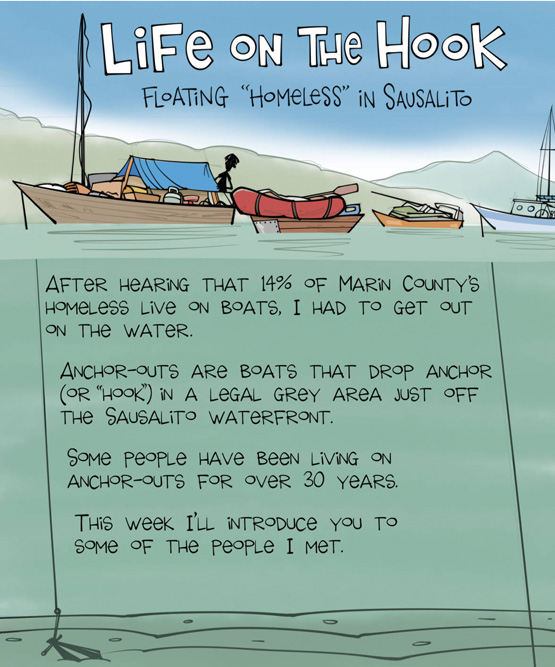
After seeing an old 1970s trailer floating on a barge (“barge” is being generous) on the water off Sausalito a few years back, I became curious about anchor-outs.
“Anchor-outs” are what they call boats that drop anchor outside formal marinas and stay awhile, often indefinitely. People have lived this way for decades. It can be a cheap way to live, but nearly everyone I spoke with said “it’s a hard life.” Almost all said those exact words.
The floating homes can range from very nice sailboats to barely floating tubs covered in tarps. The biennial Marin County homeless count in 2015 found that 14 percent of the homeless population live on boats. Most of the people I spoke with don’t consider themselves homeless.
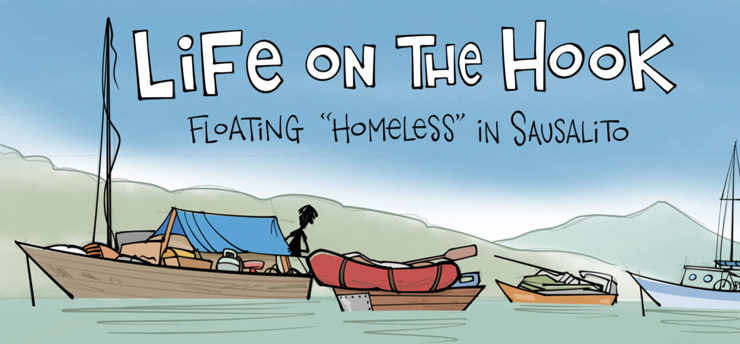
Though many anchor-outs are tidy little sailboats, some are dilapidated boats that break loose from their anchor chains or sink. I saw one unattended boat taking on water and beginning to sink when I was out on the bay. There are stories of health hazards, drugs and violence, but there are also stories of compassion, beauty and independence.
Along the waterfront, there is talk of a crackdown on anchor-outs after the Sausalito City Council enacted rules limiting anchored boats to 72 hours in one place, or face being impounded. The council also recently approved two new hires for “waterfront enforcement.”
Here are some of the people I recently met on the water.
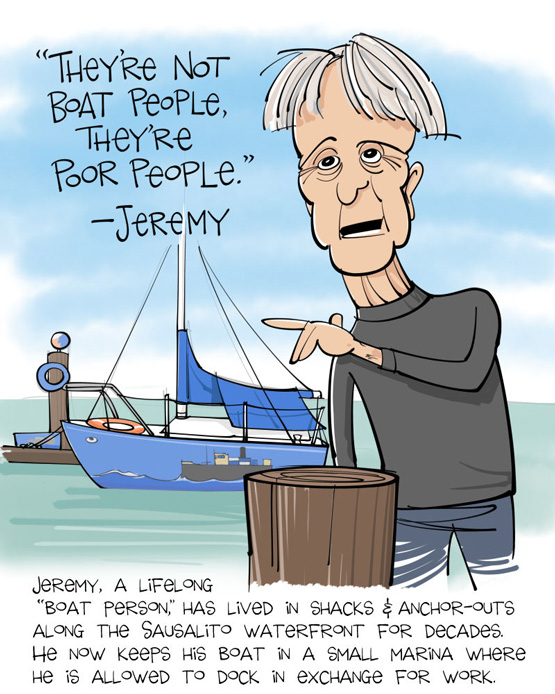
Jeremy’s life story could fill volumes. He was a 3-year-old in London during the Blitz, lived in Cameroon on his parents’ banana plantation and has worked on boats for most of his life.

John says his boat — the Suisun — has been sunk three times and restored twice. Built in 1914 by the Army Corps of Engineers, John loves to share his boat’s history.
One of the biggest anchor-out crafts on Richardson Bay, the Suisun has seen better days. The hull is rotting and the bilge pump is in a constant battle against the incoming water. John lives off a small monthly disability check, visits the local food bank and does not have the hundreds of thousands of dollars he’d need to repair his historic boat.
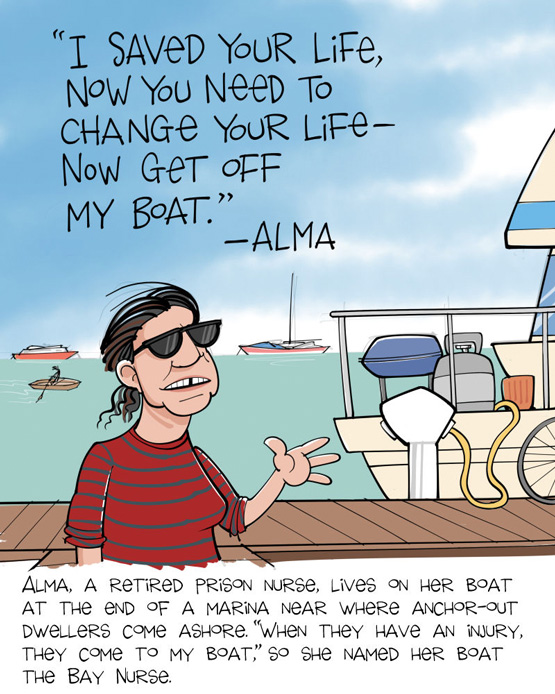
After dealing with the homeless and addicted for 22 years, Alma seems to have found her place on the water — where she practices tough love, healing and compassion.
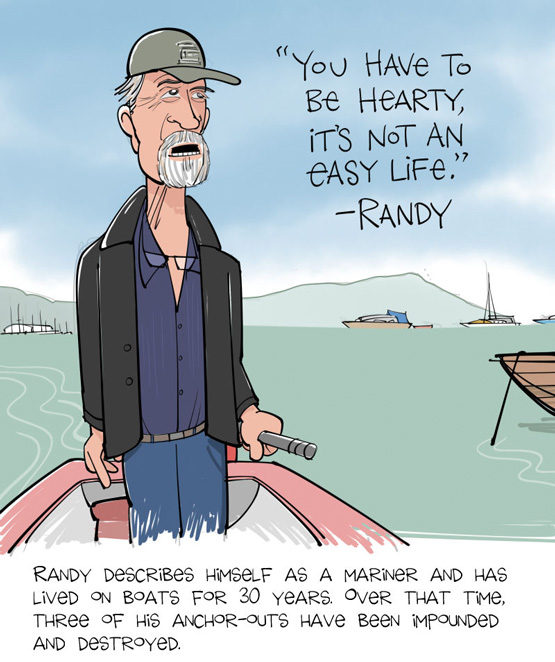 One of the things Randy showed me during our time on the water was where the U.S. Army Corps of Engineers crushes boats. If they’re called in to remove and destroy a boat, sometimes they crush it with their own equipment on land, and sometimes they hire a crew of local people from the anchor-outs to destroy it with chainsaws.
One of the things Randy showed me during our time on the water was where the U.S. Army Corps of Engineers crushes boats. If they’re called in to remove and destroy a boat, sometimes they crush it with their own equipment on land, and sometimes they hire a crew of local people from the anchor-outs to destroy it with chainsaws.
People have lived here on the margins of land, water and legality for decades. Though they may have dropped anchor years ago, people “living on the hook” face an uncertain future.
 post by Jenny Stein
post by Jenny Stein
